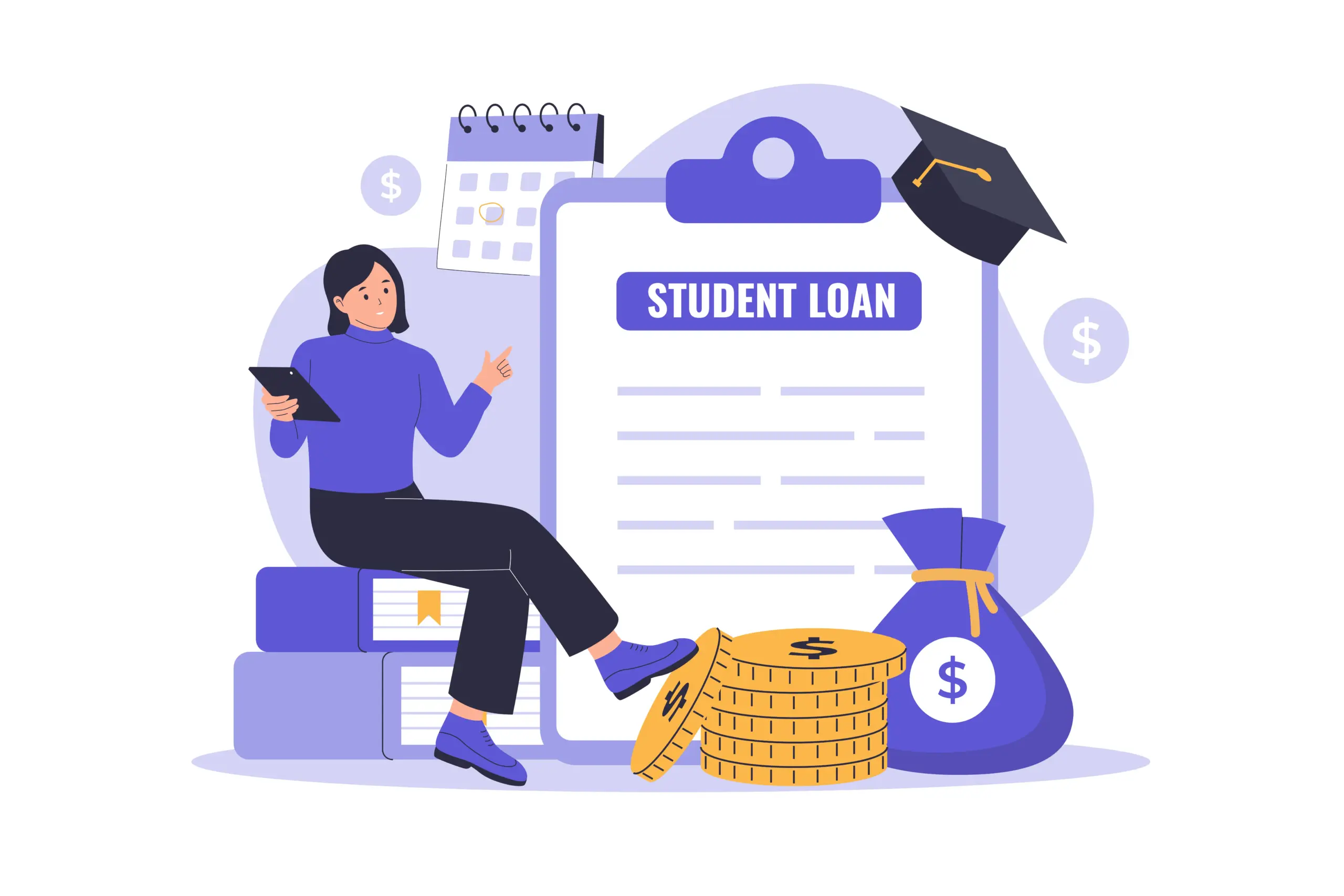Understanding the Basics: Fixed vs Variable Student Loan Rates
Before diving into which option is better, it’s important to understand what these terms actually mean. The fundamental difference lies in how the interest rate behaves throughout the life of your loan.
Fixed Interest Rates
A fixed interest rate remains constant for the entire loan term. When you take out a student loan with a fixed rate, the interest percentage you agree to at the beginning stays the same until you’ve paid off the loan completely.
All federal student loans come with fixed interest rates, providing predictability for your monthly payments. Many private lenders also offer fixed-rate options for student loans.
Variable Interest Rates
A variable interest rate can change periodically throughout the life of your loan. These rates are typically tied to a financial index like the Secured Overnight Financing Rate (SOFR) or prime rate, plus a margin determined by the lender.
Variable rates are only available through private student loan lenders. Federal student loans do not offer variable rate options. The frequency of rate changes depends on your lender’s terms—some adjust monthly, while others adjust quarterly.
Comparing the Pros and Cons of Fixed and Variable Rates
Each rate type comes with distinct advantages and disadvantages. Understanding these can help you determine which option aligns better with your financial situation and goals.
Fixed Rate Advantages
- Predictable monthly payments for the entire loan term
- Protection from interest rate increases in rising rate environments
- Easier to budget for the long term with consistent payment amounts
- Peace of mind knowing your rate won’t suddenly increase
- Simplifies financial planning for future goals
Fixed Rate Disadvantages
- Typically start at higher rates than variable options
- No benefit if market interest rates decline
- May pay more interest over time if rates remain low
- Limited flexibility unless you refinance the loan
Variable Rate Advantages
- Usually start with lower initial interest rates
- Potential for reduced interest costs if market rates decline
- Can be beneficial for shorter loan terms
- May result in significant savings during periods of low interest rates
Variable Rate Disadvantages
- Monthly payments can become unpredictable
- Risk of significantly higher payments if interest rates rise
- Difficult to budget for long-term financial planning
- Potential for rate caps as high as 25% with some lenders
- Added stress of monitoring rate changes throughout loan term
Current Market Trends and Rate Environment
Understanding the current interest rate environment can help inform your decision between fixed and variable rates. Market conditions play a significant role in determining which option might be more advantageous at a particular time.
How Economic Factors Influence Student Loan Rates
Student loan interest rates are influenced by broader economic factors. The Federal Reserve’s decisions on the federal funds rate directly impact variable rates, as they’re typically tied to market indices that move in response to these changes.
When the Federal Reserve raises rates to combat inflation, variable student loan rates tend to increase. Conversely, when the economy slows and the Fed lowers rates, variable rates may decrease. Fixed rates are also influenced by these trends, but only for new loans—existing fixed-rate loans remain unchanged.
Current Rate Environment: In today’s market, interest rates have been experiencing fluctuations due to economic factors. This volatility makes fixed rates particularly attractive for long-term student loans, as they provide protection against potential future rate increases.
| Loan Type | Current Rate Range | Historical Average | Trend |
| Federal Undergraduate (Fixed) | 4.99% – 5.50% | 4.75% | Increasing |
| Federal Graduate (Fixed) | 6.54% – 7.05% | 6.30% | Increasing |
| Private Fixed Rate | 3.99% – 14.95% | 7.50% | Stable |
| Private Variable Rate | 2.99% – 12.99% | 6.25% | Fluctuating |
Key Factors to Consider When Choosing Between Fixed and Variable Rates
Your personal circumstances and financial situation should guide your decision between fixed and variable student loan rates. Consider these important factors before making your choice:
Loan Term Length
Short-term loans (5 years or less): Variable rates may be less risky since there’s less time for rates to rise significantly.
Long-term loans (10+ years): Fixed rates provide more stability and protection against multiple rate cycles over a longer period.
Your Risk Tolerance
Low risk tolerance: If unpredictable payments would cause financial stress, a fixed rate offers peace of mind.
Higher risk tolerance: If you can handle payment fluctuations and want to potentially benefit from rate decreases, a variable rate might work.
Financial Stability
Tight budget: Fixed rates help with consistent budgeting and financial planning.
Financial flexibility: If you have emergency savings and income stability, you might be better positioned to handle the uncertainty of variable rates.
Repayment Timeline
Aggressive repayment plan: If you plan to pay off your loans quickly, a variable rate might save you money before rates have time to rise significantly.
Standard repayment: For those following a standard 10-year plan, fixed rates offer more predictability.
Economic Outlook
Rising rate environment: Fixed rates protect against future increases.
Declining rate environment: Variable rates could potentially save you money as rates fall.
Refinancing Potential
Strong credit profile: If you expect your credit to improve, you might benefit from a variable rate now with plans to refinance to a fixed rate later.
Limited refinancing options: If refinancing might be difficult for you, a fixed rate provides more certainty.
Real-World Scenarios: How Fixed and Variable Rates Perform
To better understand the impact of your rate choice, let’s examine how fixed and variable rates would perform in different economic scenarios. These examples illustrate the potential outcomes based on a $30,000 student loan with a 10-year term.
Scenario 1: Rising Interest Rate Environment
Starting conditions: Fixed rate at 5.5% vs. Variable rate starting at 4.5% (with potential to increase by 0.5% annually)
After 3 years: The variable rate has increased to 6.0%, making monthly payments higher than the fixed-rate option.
After 5 years: The variable rate reaches 7.0%, resulting in significantly higher monthly payments.
Outcome: The fixed-rate loan saves approximately $2,800 in total interest over the life of the loan.
Scenario 2: Declining Interest Rate Environment
Starting conditions: Fixed rate at 5.5% vs. Variable rate starting at 5.0% (with potential to decrease by 0.25% annually)
After 3 years: The variable rate has decreased to 4.25%, resulting in lower monthly payments.
After 5 years: The variable rate stabilizes at 4.0%.
Outcome: The variable-rate loan saves approximately $1,500 in total interest over the life of the loan.
Scenario 3: Stable Interest Rate Environment
Starting conditions: Fixed rate at 5.5% vs. Variable rate starting at 4.75% (with minimal changes)
After 10 years: The variable rate fluctuates between 4.5% and 5.0% but averages 4.75% over the loan term.
Outcome: The variable-rate loan saves approximately $1,200 in total interest over the life of the loan.
“The best choice between fixed and variable rates often depends on your time horizon. For shorter loans that you plan to pay off quickly, variable rates may offer savings. For longer-term commitments, fixed rates provide valuable protection against future rate increases.”
Special Considerations for Different Borrower Types
Your personal circumstances can significantly impact which rate type is most appropriate. Let’s look at how different borrower situations might influence this important decision.
Undergraduate Students
As an undergraduate student, you likely have limited credit history and income. Federal student loans with fixed rates are generally your best option, as they offer stable payments and valuable borrower protections like income-driven repayment plans.
If you need additional funding beyond federal loans, private loans with fixed rates provide predictability as you begin your career with potentially fluctuating income.
Graduate Students
Graduate students often take on larger loan amounts for advanced degrees. With higher debt levels, the stability of fixed rates becomes increasingly important, especially for longer-term loans like those for medical or law school.
However, if you’re entering a high-income field and plan to aggressively pay down your loans within a few years after graduation, a variable rate might help you save on interest costs.
Parent Borrowers
Parents taking out loans for their children’s education often have more established credit and financial stability. If you’re closer to retirement, fixed rates offer predictability during a time when your income might become more fixed.
For parents with strong financial positions who plan to pay off the loans quickly, variable rates could offer initial savings.
Refinancing Existing Loans
If you’re considering refinancing existing student loans, your decision should factor in current market conditions and your remaining repayment timeline. For shorter remaining terms, variable rates might offer savings. For longer refinancing terms, fixed rates provide more certainty.
Important Note: Refinancing federal student loans into private loans (whether fixed or variable rate) means losing access to federal benefits like income-driven repayment plans, loan forgiveness programs, and extended deferment options. Consider these trade-offs carefully before refinancing federal loans.
Making Your Final Decision: Fixed vs Variable Student Loan Rates
After considering all factors, how do you make your final decision? Here’s a practical approach to determining which rate type best suits your needs.
When Fixed Rates Are Usually Better:
- You value predictability in your monthly budget
- Your loan term is longer than 5-7 years
- Current interest rates are historically low
- You have a low tolerance for financial risk
- You’re borrowing a large amount that would be difficult to refinance later
- You prefer “set it and forget it” over actively managing your loans
When Variable Rates Might Make Sense:
- You plan to pay off your loan within 3-5 years
- You have financial flexibility to handle potential payment increases
- Current fixed rates are historically high
- You’re comfortable with financial risk
- You actively monitor economic trends and can refinance if needed
- You have a strong credit profile that would facilitate refinancing
Can I switch from a variable to a fixed rate later?
Yes, but only through refinancing your student loan. Refinancing requires a new credit check and application process, and approval isn’t guaranteed. If your credit score or income has improved since you first took out the loan, you might qualify for better terms when refinancing.
How often do variable rates change?
This depends on your lender’s terms. Some lenders adjust variable rates monthly, while others adjust quarterly. Before accepting a variable-rate loan, ask the lender about the frequency of rate adjustments and whether there’s a cap on how high the rate can go.
Are there any loans that combine fixed and variable features?
Some lenders offer hybrid loans that maintain a fixed rate for a certain period (typically 3-5 years) before converting to a variable rate. These can be a compromise option if you plan to pay down a significant portion of the loan during the fixed-rate period.
Final Thoughts on Student Loan Fixed vs Variable Rates
Choosing between fixed and variable student loan rates is a personal decision that depends on your financial situation, risk tolerance, and future plans. For most borrowers, especially those with longer loan terms, fixed rates offer valuable stability and predictability in an uncertain economic environment.
Variable rates can provide savings in certain scenarios, particularly for borrowers planning aggressive repayment strategies or those with the financial flexibility to handle potential rate increases. Whatever you choose, understanding the fundamental differences between these rate types empowers you to make an informed decision that aligns with your long-term financial goals.
Remember that your student loan choice isn’t just about getting the lowest possible rate today—it’s about finding the option that provides the right balance of affordability and predictability for your unique circumstances throughout the entire life of your loan.

